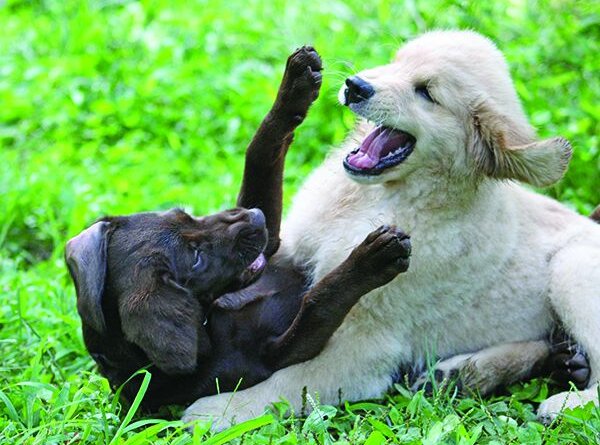What Exactly Is Appropriate Play?
For some reason, dog owners often have difficulty distinguishing between appropriate and inappropriate play. Some may think that perfectly acceptable play behavior is bullying because it involves growling, biting, and apparently pinning the playmate to the ground. Appropriate play can, in fact, look and sound quite ferocious.
The difference is in the response of the playmate. If both dogs appear to be having a good time and no one’s getting hurt, it’s usually fine to allow the play to continue. Thwarting your dog’s need to play by stopping him every time he engages another dog, even if it’s rough play, can sometimes lead to other behavior problems.
With a bully, the playmate clearly does not enjoy the interaction. The softer dog may offer multiple appeasement and deference signals that are largely or totally ignored by the canine bully. The harassment continues, or escalates.
Any time one play partner is obviously not having a good time, it’s wise to intervene. A traumatic play experience can damage the softer dog’s confidence and potentially induce a life-long fear-aggression or “Reactive Rover” response — definitely not a good thing!
Some bullies seem to spring from the box fullblown, meaning there could be a genetic element behind this type of personality. However, there can certainly be a learned component of any bullying behavior. As Jean Donaldson reminds us, the act of harassing a “non-consenting dog” is in and of itself reinforcing for bullies.
By definition, a behavior that’s reinforced continues or increases — hence the importance of intervening with a bully at the earliest possible moment, rather than letting the behavior become more and more ingrained through reinforcement. As with most behavior modification, prognosis is brightest if the dog is young, if he hasn’t had much chance to practice the unwanted behavior, and if he has not been repeatedly successful at it.
To prevent your dog from becoming the neighborhood bully, download Canine Aggression now.





